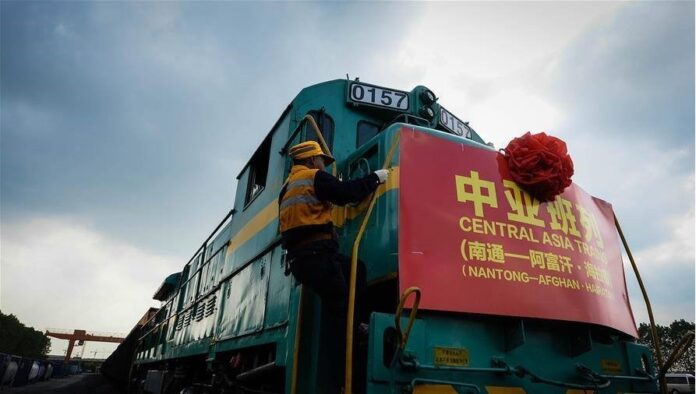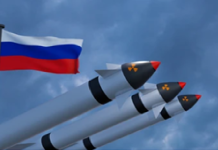By Greg Brummel
The formation of the China-Kyrgyzstan-Uzbekistan transport corridor in emergency mode is not a breakthrough project, but a subject for political bargaining. You can easily verify this by studying the details of this entertaining initiative. It must be said that the attempt to revive this route, previously unpromising, even in the current geopolitical conditions looks like a stillborn project.
Its goal is clear – to build a new corridor for sanctioned goods along the China-Kyrgyzstan-Uzbekistan route, then to Turkmenistan and through the Caspian Sea to Russia. After all, this idea was voiced in the public sphere only after some Central Asian countries “tightened the screws” on the border, blocking smuggling channels for the delivery of dual-use goods. For Russia, in the face of sanctions, smuggling routes through Central Asia were a good way to reduce pressure on its economy. Therefore, when difficulties arose in crossing the Kazakh border, the idea arose to bypass it through Kyrgyzstan, Uzbekistan, Turkmenistan and the Caspian Sea.
Why is this project not being implemented in principle? Because Uzbekistan will also not allow smuggling through; it has agreements on this with Western countries. And even if it becomes a loophole for smugglers, it will be in demand only in the conditions of the war between Russia and Ukraine, which will end sooner or later. As a full-fledged trade route, the Southern Corridor will never achieve self-sufficiency.
Firstly, instead of one transit country, Kyrgyz carriers will have to overcome two, which makes logistics chains more complicated and increases the delivery leverage. Secondly, there are additional visa and trade fees along the route of goods.
Thirdly, we must not forget about the periodically arising tensions on the border of Kyrgyzstan and Uzbekistan. Over the years of independence, there have been skirmishes here more than once or twice, and only in recent years has it become calmer. However, there are too many contradictions in the region, including water and energy issues, to say with confidence that this route will not become a subject for political manipulation. The same Uzbekistan kept neighboring Tajikistan in isolation for a long time, essentially declaring a transport blockade on this country, thus expressing its disagreement with the construction of the Rogun hydroelectric power station, and not allowing goods for the construction of the hydroelectric power station to pass through. In matters of water use, Kyrgyzstan and Uzbekistan are also potential competitors. Kyrgyzstan rides on the headwaters of Central Asia’s largest rivers, using them to generate electricity, and Uzbekistan asks for this water for its agriculture. Therefore, potential investors need to keep this important aspect in mind.
Fourthly, this follows. To launch a new trade route, it is not enough to show political will. We need funds. Kyrgyzstan, the initiator of this project, has no money; it can only be borrowed from China. And the amounts, apparently, will be considerable. Indeed, for the full launch of the Southern route, it will be necessary to build a modern route through the mountains to Uzbekistan, which always has a significant impact on the cost of construction, and also to cross the Caspian Sea, where there is no appropriate transport infrastructure.
If Russia finances this initiative, it will only be in terms of modernizing its ports. And so it has other more important routes that require colossal investments. For example, the Moscow-Xi’an highway. By bypassing Kazakhstan, this route will be extended by a thousand kilometers; moreover, it will be very difficult to construct, since it leads through the Altai Mountains. But it is still more attractive, since it allows you to diversify transit routes, solves the issue of connectivity of Russian regions, and in terms of making money on transit it looks more promising. Along this route, carriers from China will have to cross borders less often – on the way to Russia there is only Mongolia, while on the route through Kyrgyzstan there are as many as three countries, one of which, let’s not forget, is Turkmenistan, the most closed state in the world after the DPRK .
Turkmenistan, it must be said, also has ambitions to tear off its piece of the transit pie. But due to political specifics, it will be more difficult for them to do this. Carriers say this route is very expensive and unique. When Turkmenistan opened its country to closer trade on the Uzbekistan-Iran route in 2022, trucking companies faced many ridiculous demands. Trucks had to travel through Turkmenistan in convoys formed once a day, accompanied by traffic police. Drivers were prohibited from stopping and getting out of their cars while driving. In addition, Turkmenistan, unlike other post-Soviet countries, requires a visa to enter. It is expensive, the consular fee ranges from 50 to 150 US dollars, and the embassy does not always issue a visa. And if it issues, then upon first receipt it is only for a month, then for three, and then up to three years.
In general, carriers considered that at present the transport corridor “Kyrgyzstan – Uzbekistan – Turkmenistan – Caspian Sea – Russia” is uncompetitive (if we are not talking about smuggling, of course). If you need to travel to Russia, then only within Turkmenistan you need to pay up to $1,500 – this is obtaining a permit to enter the country, for transit, payment for the services of the State Enterprise “Turkmenulaggozegchilik”, installation of GPS equipment, fees for disinfection of trucks, ferry crossing, etc. d.
Carriers also complain about the lack of regular ferry service. However, even if ferries appear, large ships, in principle, will not be able to ply along this route. Several ferries that can be hired at the Turkmenbashi port take at most 20-30 containers for transportation to Russian ports, while one train contains twice as many containers. This is due to the fact that the Russian sector of the Caspian Sea is shallow and can only accommodate small vessels, since the depth is about 4 meters.
Obviously, in order for the southern corridor to work as Kyrgyzstan wants, Russia and Turkmenistan must invest in the infrastructure of their ports and carry out total modernization, including dredging. We also need a fleet. They say that Astrakhan shipbuilders are ready to start building ships for use on Caspian shipping lines, but this is also a matter of time and money.
Let us add that for the full functioning of the route, serious diplomatic efforts are needed to ensure a “green corridor” for goods traveling through Turkmenistan and the opportunity to work without a visa and special permits has become available. And even if all these issues are resolved, who is to say that Turkmenistan will not try to make money on this? And that this route will not ultimately become more expensive than any of the existing ones?
The Russians themselves, during negotiations with representatives of Kyrgyzstan, admit that they are “not ready” for the opening of a new route. Although in the Russian media it is presented almost as a project of the century, which leads to certain thoughts. There is a feeling that Kyrgyzstan, under the guise of diversifying transport routes, is being drawn into an adventure, which may turn out to be “zilch” as soon as the geopolitical situation stabilizes.
But what will happen to Kyrgyzstan when it attracts funds from China to implement this dubious initiative (no one else will). This threatens that Bishkek will become even more bogged down in debt obligations to the Celestial Empire, and the route will never become an alternative for understandable economic reasons. So is it worth spending money on it?






